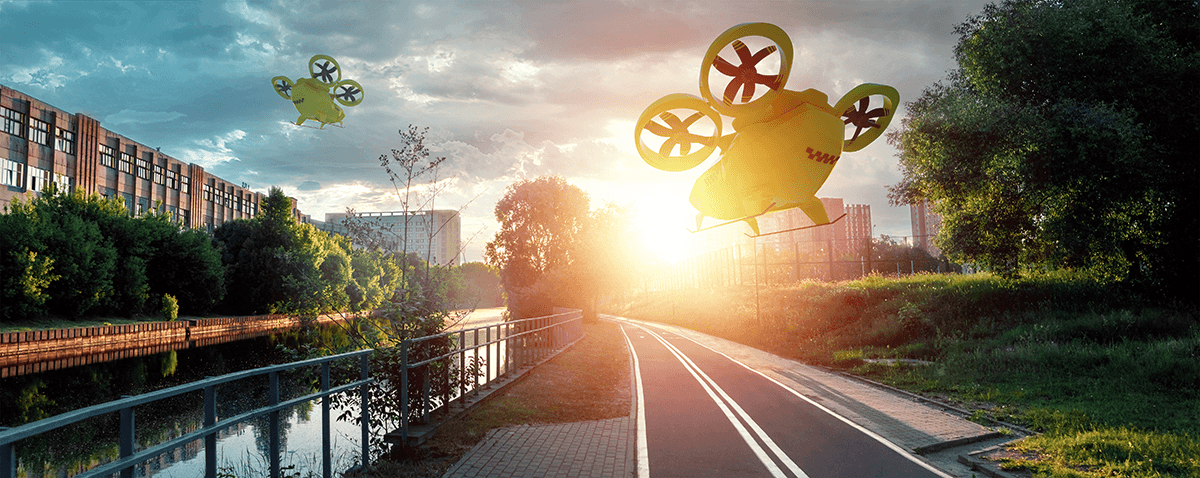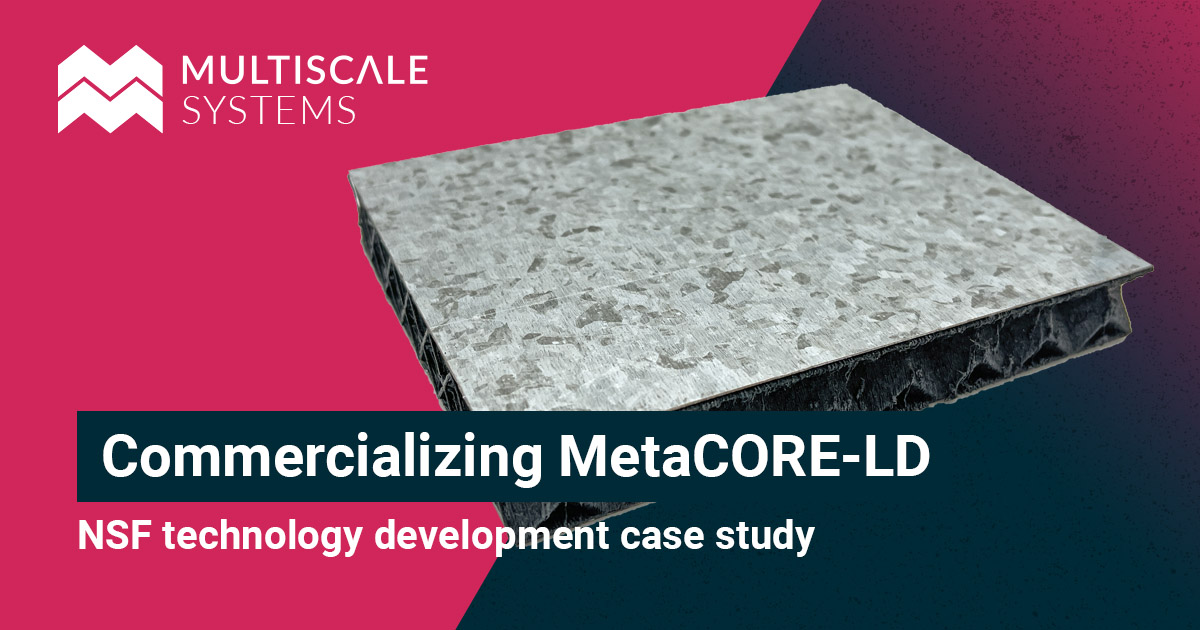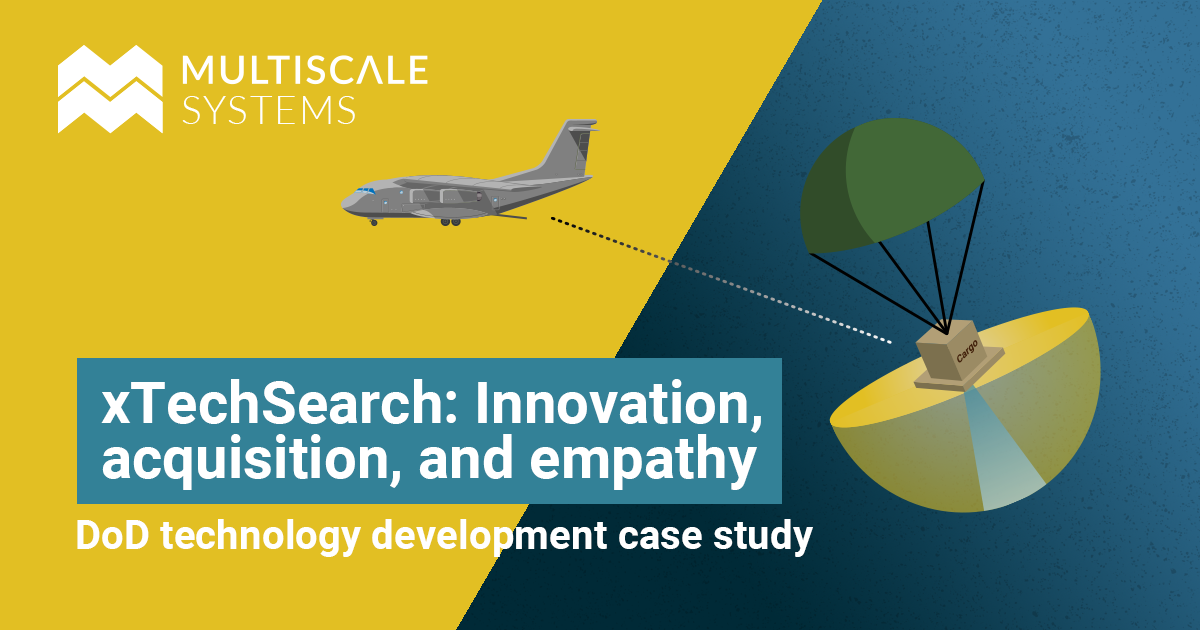Lightweight, impact-absorbing materials for urban air mobility vehicles (UAMVs)
Safety is a big concern for UAMVs. NASA is proactively seeding the development of lightweight crash mitigation technology in preparation for this emerging mode of transportation.
Outcomes:
MetaCORE patent/trademarks; 3 full-time jobs
Technology development:
MetaCORE, MetaCORE-LD
Funding:
SBIR Phase I & II
Don’t call them flying cars
A fun game to play when watching old episodes of Star Trek is to point out what technology the writers predicted correctly, and what technology they missed wildly. Combadges, tricorders, and PADDs. are pretty much today’s smart phones. The Isolinear voice-interactive Computer is a now $30 household item from Google or Amazon. Even the infamous food replicator isn’t that far from 3D printed pizzas.
For everything the writers got right when it comes to human-device interactions, the batting average for transportation technologies hasn’t been as successful.
Faster than light travel at “warp speed” through subspace? Still fiction.
Near instantaneous teleportation of people and cargo across massive distances? So far, only for atomic scale quantum information.
But Shuttlecraft for flying people and cargo across short distances is surprisingly close on the near-term horizon.
The technology’s name has changed over the years from Electric Vertical Take-Off and Landing (eVTOL) to Urban Air Mobility Vehicles (UAMVs) to, more recently, Advanced Air Mobility (AAM) as the capabilities and commercial focus evolved. But let’s be clear: we’re talking about a transformative mode of flight for ferrying people and cargo short distances with maneuvering capabilities and costs suitable for urban taxis, medical assistance, and even personal use.
Is it a Plane? A Helicopter? Or something in between?
The concept of UAMVs is possible thanks to advances in lightweight materials, energy storage, and electric propulsion. But its implementation hasn’t been limited to a single design. In fact, there are about 50 – multicoptors, fixed wings configurations with pivoting motors, tilt-wing configurations, and even folding wing designs.

The companies innovating in this space come in all sizes, from the garage engineering teams to the global aerospace Goliaths.
In terms of the technology development cycle, UAMVs are solidly in the early phase of product development, but market down-selection to the “best” design is coming up fast.
Chicken and egg problems
Because the UAMV concept is still under development with multiple competing approaches, the dynamics of crash safety are not well defined. As a result, FAA regulation (see 14 CFR Parts 23 and 27) can’t be rigorously applied and new safety requirements can’t really be written.
Without regulation and safety requirements, innovators and engineers exist in a limbo where it’s uncertain if their candidate design will be allowed to commercially (and legally) fly. And if they can’t fly/test/evaluate their design, then how will the UAMV concept ever be defined well-enough to regulate? A classic chicken-and-egg problem.
So how does it get solved?
Innovators are going to innovate, and regulators are going to regulate. Funding for innovation comes from a mix of private sector investment and public sector technology development. Meanwhile, regulators are studying the language for fixed-wing airplanes and rotorcraft as a starting point for UAMV language while simultaneously trying to define safety in terms of outcome performance rather than prescriptive design. This shift in approach will give innovators and early adopters the flexibility they need to create a multitude of flightworthy designs with clear thresholds for safety.
If you want to know more, all of this regulatory problem solving is happening out in the open through public forums and workshops. Watch a video of the recorded sessions and you’ll see how UAMV safety is being driven in a collaborative fashion with public-sector regulators and private-sector technology demonstrations.
Improving safety and crashworthiness
NASA’s Advanced Air Vehicles Program is working to develop technologies and capabilities with the potential to revolutionize air travel. Understandably, UAMVs are top of mind, and ensuring safety in the event of a crash is a necessary technical hurdle that fits within their mission.
Current crash safety technology has a rich history and finding ways to integrate modern expectations for safety with new modes of transportation is an ongoing technology challenge.
At Multiscale Systems, we recognized that mechanical metamaterials are extremely lightweight and their mechanical properties could be engineered to meet crash safety requirements for energy absorption and crush force efficiency. But a lab demonstration isn’t a commercial solution, and a commercial solution requires more than a “if you build it, they will come” approach.
Under SBIR Phase I and II contracts with NASA, we set out to optimize the design of mechanical metamaterials for improving UAMV crashworthiness. This work started with computational design, extensive additive manufacturing of prototypes, empirical validation of properties, and development of a method for scalable manufacturing.
As the technology continues to mature, we’re keeping our finger on the pulse of regulatory trends and emerging UAMV designs. As this market gets ready to take off, we’re partnering and positioning MetaCORE metamaterials as the commercial solution created specifically for the extraordinary technical challenges of safe, cost-effective, UAMV transportation.
Advances in air mobility for shuttling people and cargo are coming, and they’ll be here to stay. Guess we can score another point for the writers of Star Trek after all.
Explore our technology development case studies
National Science Foundation
How our metamaterial research evolved into a targeted commercialization strategy for MetaCORE-LD as an alternative lightweight sandwich panel for semi-trailers.
Department of Defense
Lessons learned from xTechSearch and technology development within the US Army.
Department of Energy
A reliable replacement for elastomers used in high-temperature, high-pressure sealing applications
National Institute of Standards and Technology
Non-destructive testing of complex 3D geometry with optical metrology opens the door to high-quality mass production.




